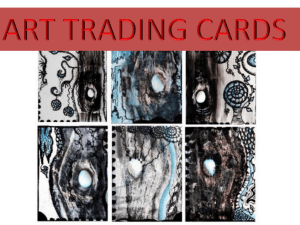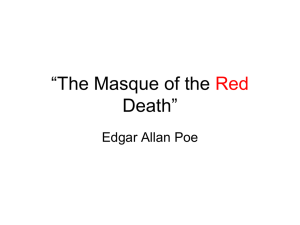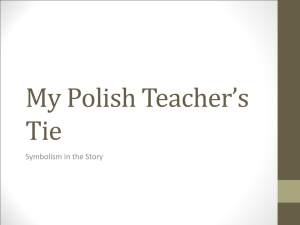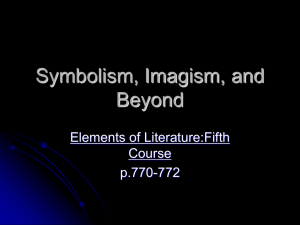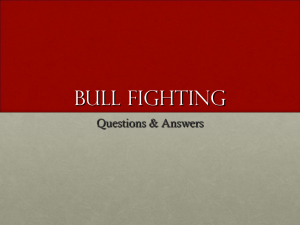4. Bull, A, Ankh
advertisement
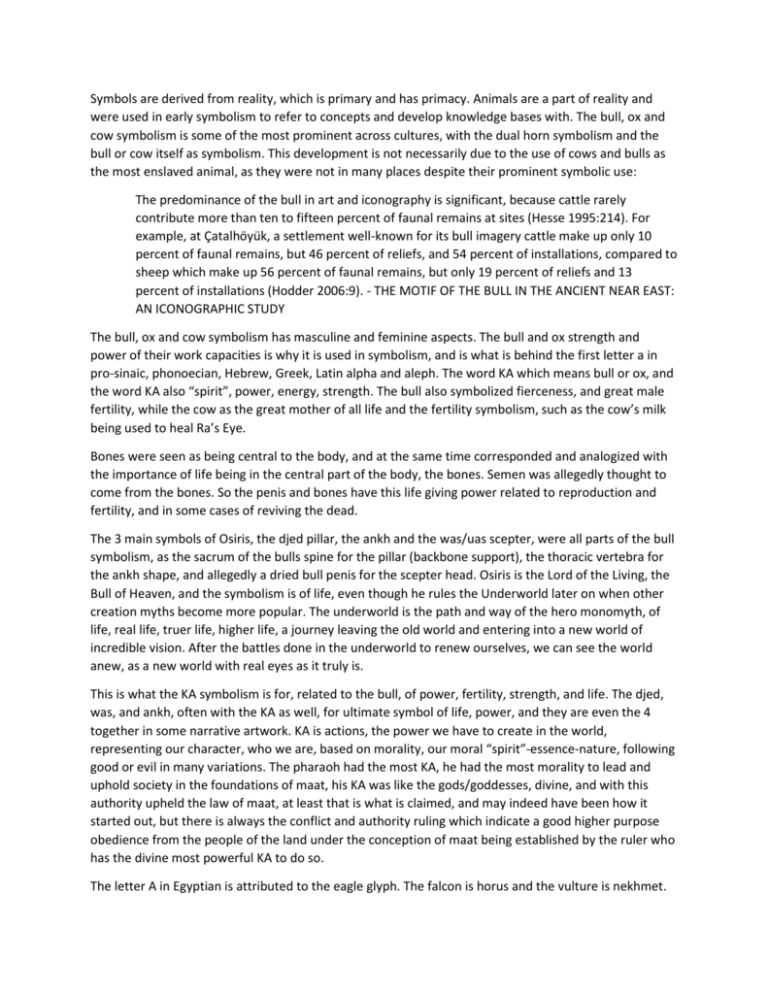
Symbols are derived from reality, which is primary and has primacy. Animals are a part of reality and were used in early symbolism to refer to concepts and develop knowledge bases with. The bull, ox and cow symbolism is some of the most prominent across cultures, with the dual horn symbolism and the bull or cow itself as symbolism. This development is not necessarily due to the use of cows and bulls as the most enslaved animal, as they were not in many places despite their prominent symbolic use: The predominance of the bull in art and iconography is significant, because cattle rarely contribute more than ten to fifteen percent of faunal remains at sites (Hesse 1995:214). For example, at Çatalhöyük, a settlement well-known for its bull imagery cattle make up only 10 percent of faunal remains, but 46 percent of reliefs, and 54 percent of installations, compared to sheep which make up 56 percent of faunal remains, but only 19 percent of reliefs and 13 percent of installations (Hodder 2006:9). - THE MOTIF OF THE BULL IN THE ANCIENT NEAR EAST: AN ICONOGRAPHIC STUDY The bull, ox and cow symbolism has masculine and feminine aspects. The bull and ox strength and power of their work capacities is why it is used in symbolism, and is what is behind the first letter a in pro-sinaic, phonoecian, Hebrew, Greek, Latin alpha and aleph. The word KA which means bull or ox, and the word KA also “spirit”, power, energy, strength. The bull also symbolized fierceness, and great male fertility, while the cow as the great mother of all life and the fertility symbolism, such as the cow’s milk being used to heal Ra’s Eye. Bones were seen as being central to the body, and at the same time corresponded and analogized with the importance of life being in the central part of the body, the bones. Semen was allegedly thought to come from the bones. So the penis and bones have this life giving power related to reproduction and fertility, and in some cases of reviving the dead. The 3 main symbols of Osiris, the djed pillar, the ankh and the was/uas scepter, were all parts of the bull symbolism, as the sacrum of the bulls spine for the pillar (backbone support), the thoracic vertebra for the ankh shape, and allegedly a dried bull penis for the scepter head. Osiris is the Lord of the Living, the Bull of Heaven, and the symbolism is of life, even though he rules the Underworld later on when other creation myths become more popular. The underworld is the path and way of the hero monomyth, of life, real life, truer life, higher life, a journey leaving the old world and entering into a new world of incredible vision. After the battles done in the underworld to renew ourselves, we can see the world anew, as a new world with real eyes as it truly is. This is what the KA symbolism is for, related to the bull, of power, fertility, strength, and life. The djed, was, and ankh, often with the KA as well, for ultimate symbol of life, power, and they are even the 4 together in some narrative artwork. KA is actions, the power we have to create in the world, representing our character, who we are, based on morality, our moral “spirit”-essence-nature, following good or evil in many variations. The pharaoh had the most KA, he had the most morality to lead and uphold society in the foundations of maat, his KA was like the gods/goddesses, divine, and with this authority upheld the law of maat, at least that is what is claimed, and may indeed have been how it started out, but there is always the conflict and authority ruling which indicate a good higher purpose obedience from the people of the land under the conception of maat being established by the ruler who has the divine most powerful KA to do so. The letter A in Egyptian is attributed to the eagle glyph. The falcon is horus and the vulture is nekhmet. Aleph, is related to air, breath, soul, spirit, etc. symbolism and this is symbolism in the letter A, in Egyptian, presumably, with the eagle. Birds are animals of the air, the eagle used for A, and aleph related in the same symbolism. The letter A is rooted in the bull-cow horn symbolism of power and strength, energy and fertility. Storm gods are linked to the bull in some mythologies. -Air and sky deity and word roots. An/en root in breath, spirit, life, soul, gods. PIE *Ans-, breath, spirit, deity PIE *en- "to breathe" PIE root ane ‘to blow, to breathe’ - Greek anemos, Latin anima Anemos is wind; (plural) by implication, (the four) quarters (of the earth), reference to Shu as 4 winds and 4 pillars. Anima is soul, spirit, vital principle. Only breathing things, creatures, have “souls” i.e. selves and consciousness, because of breath is symbolic of spirit. Air and wind is unseen, invisible, and correlates with spirit and soul symbolism. Breath of air, spirit, was unseen, going into matter, and animating the matter, into a living being. When you stop breathing, stop producing wind, and you are dead, no more life, hence wind, air, and breath is life, god, etc. An/en is the root for many gods and goddesses because the air is breathe, and that is indeed life, and god if life, etc. All loose correspondences created in the mind and believed as literal. In nature, resurrection, renewal and revival are corresponded with the life force of air and the gods ensuring fecundation and fertility of the earth through the breath of life. Ankh/anx is related to air, breath, etc. It is the hieroglyph for life. The ankh/anx was held to lips or nostrils in some cases, corresponding to the breathing life into beings symbolism. The ankh is symbolic of a direct vessel for air and life. The overall symbolism of the ankh, an, en, is air-breath-soul-life-spirit. Taking the ankh symbol and putting it over the cross of 4 elements, the air at the top and earth on the bottom, the top being the right hand-arm of ka for good, and the bottom being the left hand-arm of evil. The ankh ru oval is the good, the upright, straight and narrow path and way. The PIE angh means narrow, Armenian anjuk, Latin angus-tus. Anjuk refers also to mountains and difficulty of traversal. The all seeing all is also symbolized by the Eye of Ra, the sun at its highest point in the day. The eye has different ways of being referred to it in Egyptian, some are ir, iri and maa and mean eye, make, create, see, watch, and additionally beget, construct, do, act, take action. The top part of the ankh, the top part of the cross, is the air symbol, and where the midday sun power of Ra/Re/Ria is. This is the higher consciousness, thought, and the inner vision. PIE okw is to see, the source for English eye in PIE is ekw, equivalent to the proto-Semitic ‘ayn, eye, which became the Hebrew ayin, the Y looking letter. The ankh oval is from ru, mouth, and is the same shape as the eye glyph. This is the vesica pisces symbol, and it sits atop the Tau cross, all representing life properties. In the Bible, Joseph’s name in Genesis 41:45 has ‘panh’ as part of his name given by the pharaoh. This is peh, ayin, nun, het. The het is an h or x in Hebrew, and x is h or kh is Egyptian. It can be read p-anx, or p- ankh. Ayin, nun, het, is the eye, and the primordial waters, and life. The eye, waters of heaven and life are symbolized in the word ankh it seems, and as part of Joseph’s Egyptian name. Also, the round shape for mouth and eye in ru and iri, is related to the round shape for ayin in Hebrew. It can all be traced through Phoenician and Proto-Sinaic roots from the Egyptian eye shape to the later O shape. Back to the gods of the air. The Sumerian AN, is sky, heaven (waters of heaven, stars, etc). Anu is sky god. The dual part of the Sumerian sky god are the offspring of Enlil as the god of the air and Enki the god of water and later earth. They governed the spiritual heaven, the sky and earth, and the waters, respectively. EN.ki was known later as Ea, a possible source for words like earth, sea, etc., relating to the creation myth narrative imagery of the god Enki. Akkadian ilu is the same as Sumerian AN, an/il, sourced as Sumerian DIGIR or DINGIR which generally means god/goddess). The Sumerian DIGIR has the cuneiform symbol of 8 spokes, 8 lines intersecting with 4 topped with wedge triangles, similar to that of the wheel of life, wheel of fortune, wheel of dharma, wheel of karma. Life, fortune, fate, destiny, dharma, karma, all relate. The separation for sky and earth are Anu (Heaven) and Ki (Earth). Joining the two, is the root anki, which means universe, i.e. the concept of god, one, eternal, everlasting, "spiritual", etc. where the sky heavens and earth are united as one holistic system. Anu-ki, an-ki, en-ki, leads to Enki, the heaven and earth in one word, the waters of heaven, waters of earth, leading to the Babylonian word Ea, both for sea and earth, both waters and earth, the waters of heaven and earth in the name Enki. Many ancient gods across cultures, even into Mesoamerica, deal with storms, air, wind, hurricane, are powerful, immaterial affecting the material, unseen becoming seen, creative and destructive, creating destruction. This is inferred as "gods" conceptually. bull/ox image/symbol -> aleph/a/alpha -> El/elohim/god sky, heaven, air, wind, breath L->N/m Al/El -> An/En -Bull is king of the farms and fields, the personification of power and strength, just as the lion is the king of the forest with the same power symbolism, and they both relate to the sun symbolism and also life and resurrection. As the sun the bull or ox is heavens, resurrection, fire, while the lunar association with the crescent moon is often instead represented through the cow, to represent earth, water, night and death. There is also the dualism of the lusty, tyrannical, ferocious, stubborn bull associated with the devil, and there is the castrated ox who is symbolic of gentle and hardworking. Many bullfights, sacrifices and bull runs are symbolic of man’s superior faculties ruling the inferior lustful earthly passions. People are engaging in degenerate literal rituals to convey symbolism they no longer understand. They engage in these rituals thinking this is something good and beneficial to their evolution. The bull-cow has other dualism, of fierce tyranny as well as gentle nurturing feminine, and the dual horns, the KA, two truths of good and evil. -The bull-ox has symbolism from sounds, of the roar, the windy deep heavy breath, the hard sounding hooves are likened to thunder, storms and hurricanes and their fierce winds. The storm gods Adad, Thor and Ishkur all have bull symbolism. The bull not only represents earthly aspects in the negative, but also in the positive, as with the dual cow earthly fruitful fertile mother goddess, and the bull fertile sky god. The bull-cow symbolism is mixed with air symbolism in a dualistic and also in a complementary capacity. Shiva and the white bull represent justice and the cosmic order. In many cultures or myths the bull carries the world upon its back or in its horns. The proper symbol for aleph, a, is a bull, not an ox, because an ox is castrated of the life providing power and symbolism. Osiris was associated with the bull as Osirapis or Serapis. The apis bull later was regarded as the Ba aspect of soul for the creator deity Ptah. The sun and its rays, emanating light, heat and truth, are symbolic of halos of saintly consciousness, or consciousness emanating from the head. This can also be seen in the bull-cow horn symbolism, with rays of the sun emanating from its head. Some cow colors are a golden color, like the sun, and of gold. -The A turns into K, visually. The A and T are linked. The D and K are linked,as the D is a hand that holds things and K is a basket or hand holds things as well. The D became a K in the Phoenician. The K and the T together form a circle. T is tav and tau. A, K, T, D are linked in meaning as can be seen visually in Egyptian.


